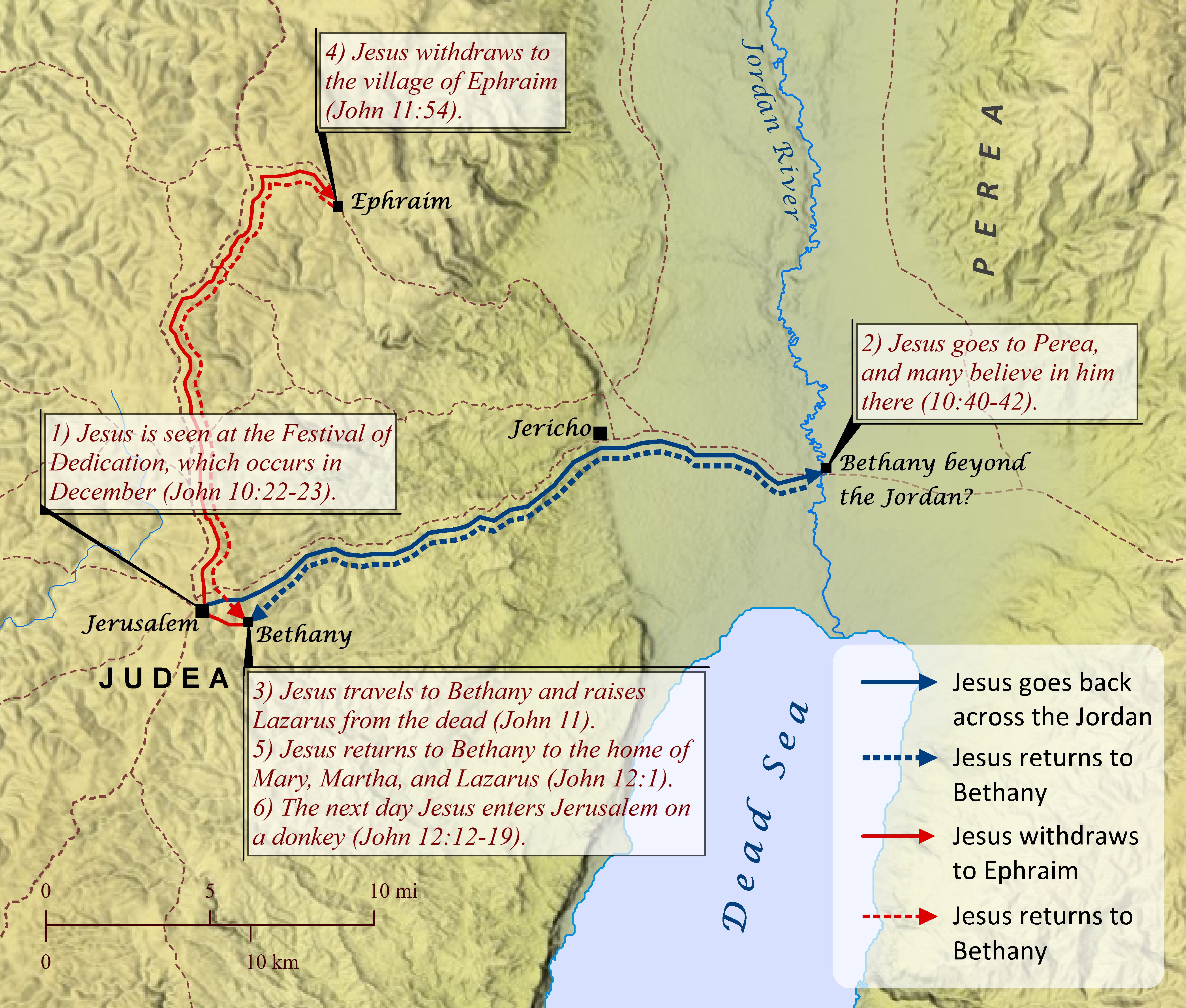Note: This view shows ‘verses’ which are not natural language units and hence sometimes only part of a sentence will be visible—click on any Bible version abbreviation down the left-hand side to see the verse in more of its context. Normally the OET discourages the reading of individual ‘verses’, but this view is only designed as a tool for doing comparisons of different translations—the older translations are further down the page (so you can read up from the bottom to trace the English translation history). The OET segments on this page are still very early looks into the unfinished texts of the Open English Translation of the Bible—please double-check these texts in advance before using in public.
AICNT Now there was a certain man who was sick, Lazarus from Bethany, the village of Mary and her sister [Martha].[fn]
OEB ¶ Now a man named Lazarus, of Bethany, was lying ill; he belonged to the same village as Mary and her sister Martha.
WEBBE Now a certain man was sick, Lazarus from Bethany, of the village of Mary and her sister, Martha.
WMBB Now a certain man was sick, Lazarus from Bethany, of the village of Miriam and her sister, Martha.
NET Now a certain man named Lazarus was sick. He was from Bethany, the village where Mary and her sister Martha lived.
LSV And there was a certain one ailing, Lazarus, from Bethany, of the village of Mary and Martha her sister—
FBV A man named Lazarus was sick. He lived in Bethany with his sisters[fn] Mary and Martha.
TCNT Now a man named Lazarus was sick. He was from Bethany, the village of Mary and her sister Martha.
T4T One time there was a man whose name was Lazarus who was very sick. He lived in Bethany village, where his older sisters Mary and Martha also lived.
LEB Now a certain man was sick, Lazarus from Bethany, the village of Mary and her sister Martha.
BBE Now a certain man named Lazarus was ill; he was of Bethany, the town of Mary and her sister Martha.
Moff Now there was a man ill, Lazarus of Bethany--the village of Mary and her sister Martha.
Wymth Now a certain man, named Lazarus, of Bethany, was lying ill— Bethany being the village of Mary and her sister Martha.
ASV Now a certain man was sick, Lazarus of Bethany, of the village of Mary and her sister Martha.
DRA Now there was a certain man sick, named Lazarus, of Bethania, of the town of Mary and Martha her sister.
YLT And there was a certain one ailing, Lazarus, from Bethany, of the village of Mary and Martha her sister —
Drby Now there was a certain [man] sick, Lazarus of Bethany, of the village of Mary and Martha her sister.
RV Now a certain man was sick, Lazarus of Bethany, of the village of Mary and her sister Martha.
SLT And a certain Lazarus was sick, from Bethany, of the town of Mary And Martha her sister.
Wbstr Now a certain man was sick, named Lazarus, of Bethany, the town of Mary and her sister Martha.
KJB-1769 Now a certain man was sick, named Lazarus, of Bethany, the town of Mary and her sister Martha.
KJB-1611 ¶ Now a certaine man was sicke, named Lazarus of Bethanie, the towne of Mary, and her sister Martha.
(¶ Now a certain man was sick, named Lazarus of Bethanie, the town of Mary, and her sister Martha.)
Bshps A certayne man was sicke, named Lazarus of Bethanie, the towne of Marie and her sister Martha.
(A certain man was sick, named Lazarus of Bethanie, the town of Mary/Maria and her sister Martha.)
Gnva And a certaine man was sicke, named Lazarus of Bethania, the towne of Marie, and her sister Martha.
(And a certain man was sick, named Lazarus of Bethania, the town of Mary/Maria, and her sister Martha. )
Cvdl There laye one sicke, named Lazarus of Bethania, in ye towne of Mary & hir sister Martha.
(There lay one sick, named Lazarus of Bethania, in ye/you_all town of Mary and her sister Martha.)
TNT A certayne man was sicke named Lazarus of Bethania the toune of Mary and her sister Martha.
(A certain man was sick named Lazarus of Bethany the town of Mary and her sister Martha. )
Wycl And ther was a sijk man, Lazarus of Bethanye, of the castel of Marie and Martha, hise sistris.
(And there was a sick man, Lazarus of Bethanye, of the castel of Mary/Maria and Martha, his sisters.)
Luth Es lag aber einer krank mit Namen Lazarus von Bethanien, in dem Flecken Marias und ihrer Schwester Martha.
(It lag but one/a sick with name(s) Lazarus from Bethanien, in to_him stains Marias and of_their/her sister Martha.)
ClVg Erat autem quidam languens Lazarus a Bethania, de castello Mariæ et Marthæ sororis ejus.[fn]
(It_was however some languens Lazarus from Bethania, from/about purelyllo Mariæ and Marthæ sister's his. )
UGNT ἦν δέ τις ἀσθενῶν Λάζαρος ἀπὸ Βηθανίας ἐκ τῆς κώμης Μαρίας, καὶ Μάρθας τῆς ἀδελφῆς αὐτῆς.
(aʸn de tis asthenōn Lazaros apo Baʸthanias ek taʸs kōmaʸs Marias, kai Marthas taʸs adelfaʸs autaʸs.)
SBL-GNT Ἦν δέ τις ἀσθενῶν, Λάζαρος ἀπὸ Βηθανίας ἐκ τῆς κώμης Μαρίας καὶ Μάρθας τῆς ἀδελφῆς αὐτῆς.
(Aʸn de tis asthenōn, Lazaros apo Baʸthanias ek taʸs kōmaʸs Marias kai Marthas taʸs adelfaʸs autaʸs.)
RP-GNT Ἦν δέ τις ἀσθενῶν Λάζαρος ἀπὸ Βηθανίας, ἐκ τῆς κώμης Μαρίας καὶ Μάρθας τῆς ἀδελφῆς αὐτῆς.
(Aʸn de tis asthenōn Lazaros apo Baʸthanias, ek taʸs kōmaʸs Marias kai Marthas taʸs adelfaʸs autaʸs.)
TC-GNT Ἦν δέ τις ἀσθενῶν Λάζαρος ἀπὸ Βηθανίας, ἐκ τῆς κώμης Μαρίας καὶ Μάρθας τῆς ἀδελφῆς αὐτῆς.
(Aʸn de tis asthenōn Lazaros apo Baʸthanias, ek taʸs kōmaʸs Marias kai Marthas taʸs adelfaʸs autaʸs. )
Key for above GNTs: yellow:punctuation differs (from our SR-GNT base).
